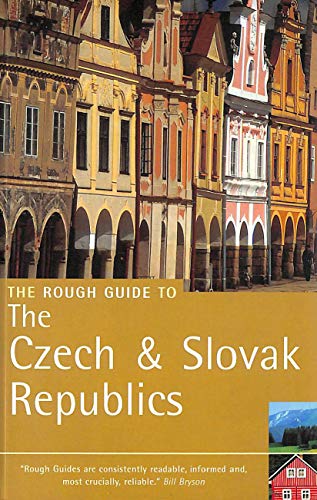The Rough Guide to Czech & Slovak Republics
Humphreys, Rob
About the Book
Description:
Book is in Used-Good condition. Pages and cover are clean and intact. Used items may not include supplementary materials such as CDs or access codes. May show signs of minor shelf wear and contain limited notes and highlighting. 1.25. Seller Inventory # 1858289041-2-4
About this title:
Synopsis: INTRODUCTION
"The only thing I know about Slovakia is what I learned first-hand from your foreign minister, who came to Texas."
George W. Bush replying to a Slovak journalist. Bush had, in fact, met the leader of Slovenia. The complexities of central European politics can be baffling to outsiders. In fact, even those who knew their Slovaks from their Slovenes were surprised when, on New Year’s Day 1993, after seventy years of (sometimes turbulent) cohabitation, the Czechs and Slovaks went their separate ways and Czechoslovakia ceased to exist. To the outsider, at least, it had looked like a match made in heaven. Yet just three years after the Velvet Revolution – when true to their pacifist past, the Czechs and Slovaks shrugged off 41 years of Communist rule without so much as a shot being fired – came the Velvet Divorce.
In the ten years since then, the two republics have continued to change at an unprecedented rate and are now more accessible today than at any time since the 1930s. The major cities buzz with a cultural and commercial diversity, and – apart from the obligatory high-rise suburbs – fail to conform to most people’s idea of former Eastern Europe. Luxury hotels have sprouted up all over Prague and, while the remoter regions can sometimes seem more reminiscent of the early twentieth century than the twenty-first, private shops and restaurants now exist in even the most provincial of rural villages. Instead of posters exhorting the country’s citizens to fulfil the next five-year plan, there are now billboards advertising mobile phones, investment portfolios and cars. Inevitably, the pace of change in both republics has been bewildering for those who lived through the Communist era, and along with the new-found freedom have come the usual suspects: multinationals, mafia and all the vices that plague the western world. Few Czechs or Slovaks would want to turn the clock right back, but when the Czech Communists receive eighteen percent of the vote, and the most popular Slovak politician is a nationalist who inveighs against the EU and NATO, it’s clear that not everybody’s happy with the changes.
Most Czechs and Slovaks, however, simply shrug their shoulders at the problems, since neither nation has ever felt in full control of its historical destiny. When Czechoslovakia was founded in 1918, it was always a marriage of convenience: the Czechs reasoned that the Slovaks would help dilute the number of ethnic Germans in the new country; the Slovaks needed to escape the unwanted attentions of the Hungarians, who were keen to reform Greater Hungary. The Nazis broke up the marriage in 1938 by forcing the Slovaks into a Faustian pact; ten years later, any thoughts of divorce were thrown out of the window as the country disappeared behind the Iron Curtain; and in 1968, Warsaw Pact tanks trampled on the country’s dreams of "socialism with a human face". The 1989 Velvet Revolution only took place because the Soviet leader Gorbachev allowed it to. Even the break-up of the country was cooked up by the intransigent leaders of the two main political parties, and went ahead without a popular referendum.
In contrast to the political upheavals that have plagued the region, the Czech and Slovak Republics have suffered very little physical damage over the last few centuries. Gothic castles and Baroque chateaux have been preserved in abundance, town after town in Bohemia and Moravia has retained its old medieval quarter, and even the wooden architecture of Slovakia has survived beyond all expectations. Geographically speaking, the two republics are the most diverse of all the former Eastern Bloc states. Together they span the full range of central European cultures, from the old German towns of the west to the Hungarian and Rusyn villages in East Slovakia. In physical terms, too, there’s enormous variety: Bohemia’s rolling hills, lush and relentless, couldn’t be more different from the flat Danube basin, or the granite alpine peaks of the High Tatras, the beech forests of the far east, or the coal basins of the Moravian north.
About the Author: Rob Humphreys has been writing for Rough Guides since 1989. He has traveled extensively, writing Pocket Rough Guide London (with S. Cook), Pocket Rough Guide Prague, and The Rough Guide to London (with S. Cook). Rob is also the coauthor of The Rough Guide to Scotland, The Rough Guide to Scottish Highlands & Islands, and The Great Glen Rough Guides Snapshot Scotland.
Bibliographic Details
Title: The Rough Guide to Czech & Slovak Republics
Publisher: Rough Guides
Publication Date: 2002
Binding: Soft cover
Condition: Good
